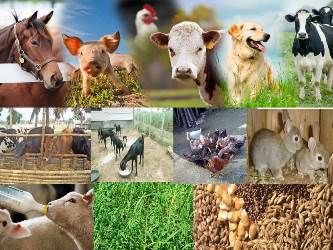



Received: 28-Nov-2022, Manuscript No. GJASLPAB-22-84102; Editor assigned: 02-Dec-2022, Pre QC No. GJASLPAB-22-84102 (PQ); Reviewed: 16-Dec-2022, QC No. GJASLPAB-22-84102; Revised: 23-Dec-2022, Manuscript No. GJASLPAB-22-84102 (R); Published: 30-Dec-2022, DOI: 10.35841/2408-5499.22.10.176
Zoonotic Diseases (ZDs) or zoonotic infections (zoonoses) are illnesses that can spread from animals to people. The possibility of transmission of ZDs to humans may be increased by the closeness of humans and animals kept as pets, livestock husbandry, and game hunting. According to estimates, 3 out of every 4 new or emerging infectious diseases in humans and more than 6 out of 10 infectious diseases begin in animals. The majority of animals act as reservoirs for harmful microorganisms that first appear or reappear. The majority of these microorganisms are commensals that live in the gastrointestinal tracts of these animals, but they can turn pathogenic when they are introduced to a suitable human host. One of the most frequent and feared threats to people is ZDs. An increasing concern worldwide is the emergence and reemergence of zoonoses and their catastrophic effects on human health.
Each year, zoonotic illnesses are thought to be the cause of 2.5 billion cases worldwide and 2.7 million fatalities. In low-income nations, ZDs make up around 25% of the burden of infectious diseases. In tropical and subtropical Africa, where zoonotic illnesses are likely to co-infect with other infectious diseases including malaria, tuberculosis, and HIV, a combined disease burden is seen on people. These linked conditions may make diseases more severe and make people more vulnerable to zoonotic agents, which would facilitate the transmission of these diseases among communities. Emerging Infectious Diseases (EIDs), especially ZDs, have been linked to Central Africa, possibly as a result of variables like population increase, urbanisation, political unrest, social unrest, intensification of agriculture and livestock, deforestation, and climate.
Zoonoses are caused by a spectrum of diseases such as viruses, bacteria, fungi and parasite. Some bacterial zoonoses include anthrax, botulism, plague and tularemia, which are categorised in category A warfare agents, meanwhile, category B agents include brucellosis, foodborne agents, glanders, psittacosis, melioidosis, Qfever, and typhus fever. Zoonotic pathogens that cause foodborne illnesses are frequently found in livestock (including avian, bovine, caprine, equine, ovine, and porcine), as well as in wild animals, pets, and rodents. These pathogens include Campylobacter, Salmonella, Listeria monocytogenes, and the enterobacteriaceae family. The majority (70%) of emerging viral diseases represent zoonoses, with such prominent examples being HIV/AIDS influenza, West Nile virus encephalitis, SARS, Ebola virus disease, Marburg virus disease.
The transmission of zoonotic diseases can be through direct contact, indirect contact, vector-borne, foodborne, and water borne. Foodborne zoonosis can spread throughout the food chain, particularly during meat preparation, slaughtering, and handling of food items with animal origins. Zoonotic diseases prevention strategies vary for each infection. However, numerous measures have demonstrated to be beneficial in lowering risk at the community and personal levels. The risk of foodborne ZD outbreaks through foods like meat, eggs, dairy, or even some vegetables is reduced by safe and adequate recommendations for animal care in the agricultural sector. Standards for the safe disposal of trash, the preservation of surface water in the natural environment, and standards for clean drinking water are all vital and effective. When zoonotic infections do emerge, community transmission can be slowed down by educational efforts that encourage handwashing after interaction with animals and other behavioural changes.